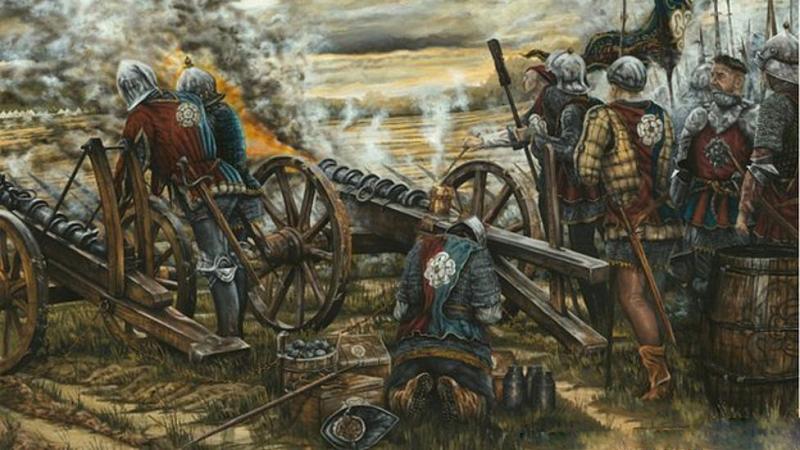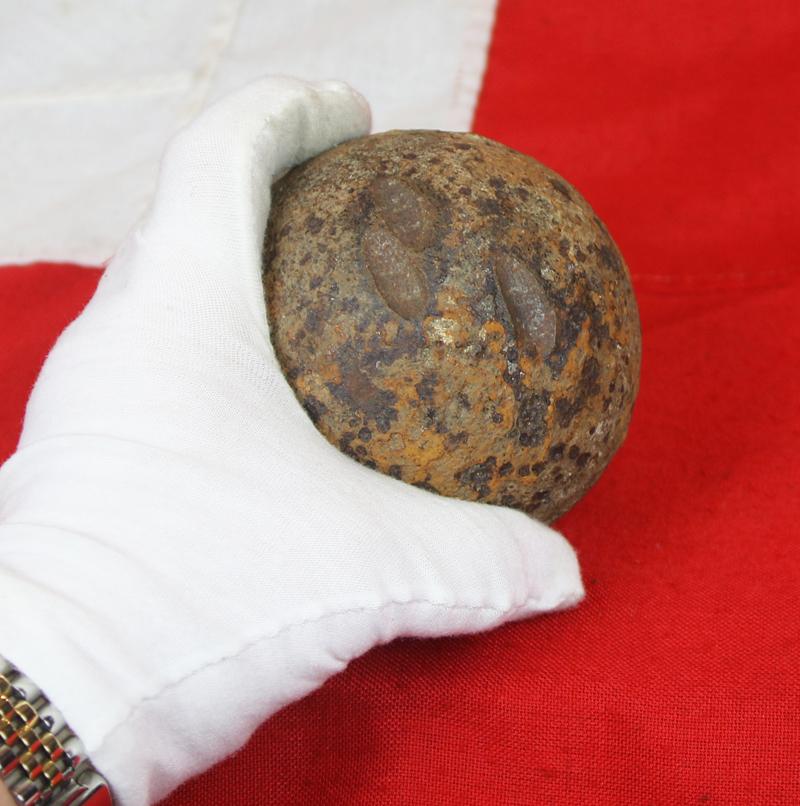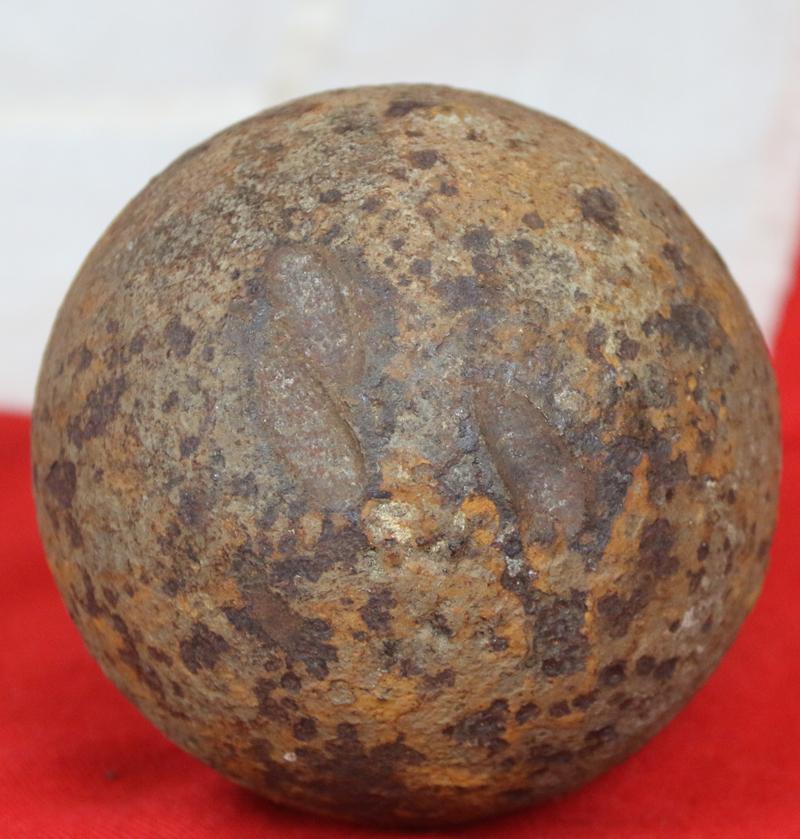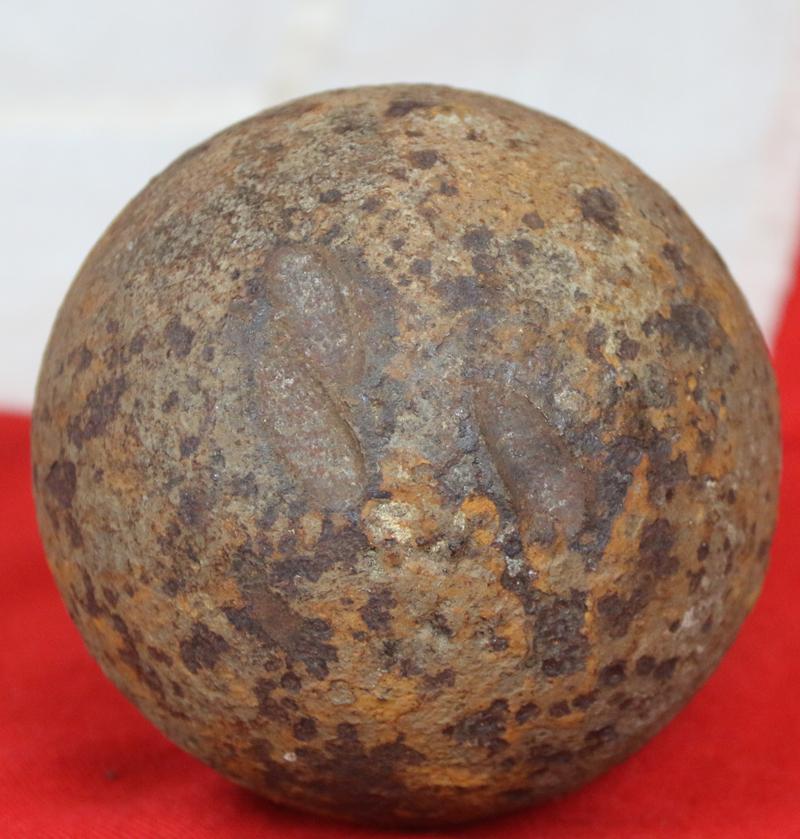SOLD An Extremely Rare, British 15th Century, 'Wars of the Roses' Original Cannonball Recovered from The Battle of St Albans' Battle Site of Bernards Heath,
An Extremely Rare, British 15th Century, 'Wars of the Roses' Original Cannonball Recovered from The Battle of St Albans' Battle Site of Bernards Heath, 1461. Probably the Second Oldest Surviving Cannon Ball in Britain
An Extremely Rare, British 15th Century, 'Wars of the Roses' Original Cannonball Recovered from The Battle of St Albans' Battle Site of Bernards Heath, 1461. Probably the Second Oldest Surviving Cannon Ball in Britain
In 2015 the BBC reported on the news that possibly the oldest surviving British cannonball, was recovered from the 1460 Battle of Northampton battle site, and experts believe artillery was used for the first time in conflict in England at the Battle of Northampton, which was only one year before the 1461 Battle of St Albans at Bernards Heath from whence this cannonball was dug up and recovered. Which may likely, deem this very cannon ball to be the second oldest English cannon ball ever recovered in England. It may have been made in the same method as the cannon balls recovered from King Henry VIIIth's flagship. Analysis of the microstructure of a Mary Rose cannon ball shows it has an outer region of white cast iron and inner region of grey cast iron, indicating a slower cooling rate towards the centre of the casting
The Second Battle of St Albans was fought on 17 February 1461 during the Wars of the Roses in England. It took place at St Albans in Hertfordshire at Barnards Heath, the first battle having been fought in 1455. The army of the Yorkist faction under the Earl of Warwick attempted to bar the road to London north of the town. The rival Lancastrian army used a wide outflanking manoeuvre to take Warwick by surprise, cut him off from London, and drive his army from the field. The victors also released the feeble King Henry VI, who had been Warwick's prisoner, from his captivity. However, they ultimately failed to take advantage of their victory.
The Wars of the Roses were fought between the supporters of two branches of the Plantagenet dynasty: the House of Lancaster, represented by the mentally unstable King Henry VI, and those of the rival House of York. Richard of York quarrelled with several of Henry's court during the late 1440s and early 1450s. He was respected as a soldier and administrator, and was believed by his own supporters to have a better claim to the throne than Henry. York and his friends finally openly rebelled in 1455. At the First Battle of St Albans, York gained a victory, but this did not resolve the causes of the conflict. After several attempts at reconciliation, fighting resumed in 1459. At the Battle of Northampton in 1460, Richard of York's nephew, the Earl of Warwick, defeated a Lancastrian army and captured King Henry, who had taken no part.
York returned to London from exile in Ireland and attempted to claim the throne, but his supporters were not prepared to go so far. Instead, an agreement was reached, the Act of Accord, by which York or his heirs were to become king after Henry's death. This agreement disinherited Henry's young son, Edward of Westminster. Henry's wife, Margaret of Anjou, refused to accept the Act of Accord and took Edward to Scotland to gain support there. York's rivals and enemies meanwhile raised an army in the north of England. York and his brother-in-law, the Earl of Salisbury (Warwick's father), led an army to the north late in 1460 to counter these threats, but they drastically underestimated the Lancastrian forces. At the Battle of Wakefield, the Yorkist army was destroyed and York, Salisbury and York's second son, Edmund, Earl of Rutland, were killed in the fighting or were executed after the battle. Weight 8 pounds, 3 3/4 inches diameter very good and sound condition with a section of impact marks
Code: 24002
Price
on
Request




